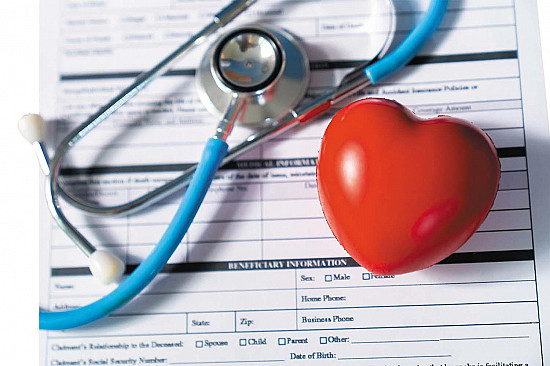Travel tips for people with heart related risks
Follow this advice before, during, and after your flight — especially when it's time to order a drink.
- Reviewed by Christopher P. Cannon, MD, Editor in Chief, Harvard Heart Letter; Editorial Advisory Board Member, Harvard Health Publishing

If you're planning to travel by plane over the holidays or for a winter vacation, a little extra preparation may be wise if you have (or are at risk for) heart disease. For most people, the simple precautions described below will suffice. But check with your doctor before booking a flight if you've recently had a heart attack or undergone any type of heart procedure.
Before takeoff
Write down the phone numbers for your primary care doctor (and cardiologist, if applicable) on a card or in small notebook, just in case your cellphone dies. Include your current medical conditions and a list of your prescriptions, which you'll need in the event of an emergency.
"Keep all of your prescription medications easily accessible in your carry-on bag, and make sure to bring extra doses in case of travel delays," says Dr. Yuliya Mints, a cardiologist at Harvard-affiliated Beth Israel Deaconess Hospital. It's safer — and in many states and countries, required — to leave them in the original labeled container.
Make note of any time difference between your home and destination. Ideally, you should stick to a consistent schedule and take your medications (especially blood pressure and anti-clotting drugs) based on your home time zone, says Dr. Mints. Set an alarm on your phone or watch as a reminder, she suggests.
At the airport, the full-body scans commonly used for security screening are safe for people with pacemakers or implantable cardioverter-defibrillators. But these devices may trigger alarms on walk-through metal detectors, which are used in certain circumstances. Carry the ID card for your device in case you need to show it to security personnel, says Dr. Mints.
In the air
When the flight attendants offer up drinks, resist the temptation to order an alcoholic beverage. "Even on the ground, drinking alcohol can raise the risk of atrial fibrillation and high blood pressure," says Dr. Mints. But inflight drinking may pose added dangers, particularly for people prone to cardiovascular disease, according to a study published online June 3, 2024, by the journal Thorax.
For the study, researchers randomly assigned 48 healthy adults to spend two nights sleeping at normal air pressure or at the equivalent of airplane cabin pressure. The participants stayed sober for one night but drank alcohol (the equivalent of two beers or two glasses of wine) the other night. They also wore devices measuring their blood oxygen and heart rate.
Compared to people sleeping in normal air pressure, those sleeping in airplane cabin pressure had lower blood oxygen levels and higher heart rates. Adding alcohol to the mix lowered oxygen levels even more and boosted heart rates even higher. Such changes could be dangerous for older adults at risk for heart problems, says Dr. Mints.
But do drink plenty of water, which has the added advantage of requiring you to get up to use the restroom. On a long flight, walking a little every hour or so will help improve circulation in your legs; so can flexing your feet and circling your ankles. Doing so may reduce the chance of developing a blood clot, although the overall risk of such a clot (known as deep-vein thrombosis, or DVT) is quite low. Doctors often recommend that people with a history of DVT wear compression stockings (elastic, below-the-knee socks that gently squeeze your calves) when they fly.
At your destination
If your vacation involves more activity that you're accustomed to doing regularly, take it easy the first day or so. That's especially important if you travel to a high-elevation destination, such as a ski resort. The higher the altitude, the less oxygen concentration in the air (see "Oxygen levels at high-altitude destinations in America"). In response, your heart rate and blood pressure rise temporarily until your body adapts to the lower oxygen level, usually within a few days. As a general rule, don't go above 8,000 feet the first day, and give your body time to adapt before going higher or doing any strenuous exercise. Ascending up to 12,000 feet is considered fine for most people with stable heart disease.
In the event that you need medical care while away from home, the CDC has helpful information, including resources about locating medical services abroad.
Oxygen levels at high-altitude destinations in AmericaIf you live close to sea level and travel to mile-high Denver (5,279 feet), you might not notice the elevation change — even if you do vigorous exercise. The average drop in VO2 max (the maximum amount of oxygen you can use during intense exercise) is just 1%. In Park City, Utah (7,001 ft), the reduction is 9%. But if you ascend to the highest ski chairlift in North America in Breckenridge, Colo. (12,840 feet), you'll definitely notice the difference. At that elevation, the reduction in VO2 max is about 25%. |
Image: © Dolomites-image/Getty Images
About the Author

Julie Corliss, Executive Editor, Harvard Heart Letter
About the Reviewer

Christopher P. Cannon, MD, Editor in Chief, Harvard Heart Letter; Editorial Advisory Board Member, Harvard Health Publishing
Disclaimer:
As a service to our readers, Harvard Health Publishing provides access to our library of archived content. Please note the date of last review or update on all articles.
No content on this site, regardless of date, should ever be used as a substitute for direct medical advice from your doctor or other qualified clinician.
















